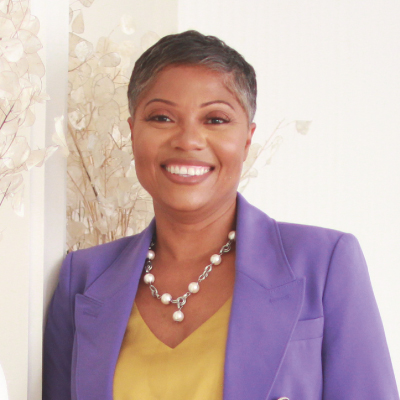Trauma bonds are complex emotional connections formed between individuals, typically in abusive or toxic relationships. These bonds are forged through cycles of abuse, manipulation, and intermittent acts of kindness, creating a psychological dependency that makes it difficult for individuals to leave the relationship, even when it is harmful. Trauma bonds are not about love or loyalty—they are survival mechanisms deeply rooted in the human brain’s response to stress and fear.
Dr. Joan, an expert in trauma recovery, explains:
“A trauma bond ties individuals to their abusers not because of affection, but because the brain seeks safety, even within a harmful relationship. Understanding these bonds is crucial to breaking free and fostering healing.”
In this detailed blog, we explore what trauma bonds are, their causes, signs, and effects, as well as steps to break free and heal from them.
The Psychology Behind Trauma Bonds
Trauma bonds stem from the brain’s survival instincts, particularly the fight, flight, or freeze response. When individuals experience abuse, their brain triggers this survival mechanism. However, when abuse is coupled with intermittent acts of kindness, affection, or apologies, the brain becomes conditioned to associate these moments of reconciliation with safety.
This dynamic creates a cycle of dependency, where the victim stays in the relationship, hoping for more moments of kindness while enduring ongoing harm.
The Cycle of Abuse and Reconciliation
Trauma bonds often follow a predictable pattern:
Abuse: Emotional, physical, or psychological harm creates fear and vulnerability.
Reconciliation: The abuser apologizes, offers affection, or promises change, creating a false sense of security.
Tension Building: The relationship becomes strained, with warning signs of impending abuse.
Repeat: The cycle of abuse begins again, strengthening the trauma bond.
Signs of a Trauma Bond
Recognizing a trauma bond is the first step toward breaking free. Common signs include:
Rationalizing or Minimizing Abuse: Justifying harmful behaviour as normal or deserved.
Self-Blame: Believing that you are at fault for the abuser’s actions or feelings.
Difficulty Leaving: Feeling emotionally trapped or unable to leave the relationship despite the harm.
Craving Validation: Seeking approval or affection from the abuser to feel valued or loved.
Isolation: Withdrawing from friends, family, or support systems due to shame or manipulation by the abuser.
Denial: Ignoring or downplaying the severity of the abuse to maintain the relationship.
Who Is at Risk of Trauma Bonds?
While anyone can develop a trauma bond, certain factors increase vulnerability:
1. History of Trauma
Individuals with unresolved childhood trauma or a history of neglect and abuse are more likely to form trauma bonds.
2. Low Self-Esteem
A lack of self-worth can lead individuals to tolerate abusive behaviour, believing they don’t deserve better.
3. Emotional Isolation
People without strong support systems may cling to abusive relationships, viewing them as their only source of connection.
4. Power Imbalances
Trauma bonds often form in relationships where one party holds significant control, such as romantic partnerships, parent-child relationships, or workplace dynamics.
A report by the Canadian Women’s Foundation revealed that nearly 30% of Canadian women experience intimate partner violence, a common context for trauma bonds (Source).
The Impact of Trauma Bonds
Trauma bonds can have profound and lasting effects on mental, emotional, and physical well-being.
1. Emotional Effects
- Intense feelings of shame, guilt, or unworthiness.
- Fear of abandonment or rejection.
- Emotional numbness or detachment.
2. Psychological Effects
- Chronic anxiety, depression, or PTSD.
- Intrusive thoughts or flashbacks about the relationship.
- Distorted self-perception and inability to trust others.
3. Physical Effects
Chronic stress-related conditions like fatigue, headaches, or digestive issues.
Sleep disturbances such as insomnia or nightmares.
Increased susceptibility to illnesses due to weakened immunity.
Dr. Joan notes:
“Trauma bonds keep individuals in survival mode, where they’re focused on enduring rather than thriving. Breaking free requires addressing the emotional and physical toll of these bonds.”
Breaking Free from a Trauma Bond
Healing from a trauma bond is a challenging yet empowering process. Here are practical steps to break free and reclaim your independence:
1. Acknowledge the Trauma Bond
The first step is recognizing the toxic patterns in the relationship. Journaling your experiences or speaking with a trusted friend can help identify cycles of abuse and manipulation.
2. Seek Professional Help
Trauma bonds are deeply rooted in the psyche and often require guidance from a trauma-informed therapist.
Effective Therapies:
Cognitive Behavioural Therapy (CBT): Reframes negative thought patterns and builds resilience.
Eye Movement Desensitization and Reprocessing (EMDR): Helps process traumatic memories and reduce their emotional impact.
Dialectical Behaviour Therapy (DBT): Teaches emotional regulation and coping strategies.
3. Create a Safety Plan
If the trauma bond involves physical abuse, prioritize your safety by developing a plan to leave the relationship. This may include:
Reaching out to local shelters or hotlines.
Having emergency contacts readily available.
Securing financial independence if possible.
Explore More: How to Break Trauma Bond?
4. Set Boundaries
Establishing boundaries protects you from further manipulation. This may include:
Limiting or cutting contact with the abuser.
Avoiding shared spaces or situations that trigger memories.
Seeking legal protection if necessary.
5. Rebuild Your Support System
Isolation often reinforces trauma bonds. Reconnect with trusted friends, family, or support groups to rebuild a sense of belonging and perspective.
6. Practice Self-Compassion
Self-blame is a common consequence of trauma bonds. Engage in practices that promote self-love and healing, such as:
Affirmations to rebuild self-worth.
Mindfulness exercises to reduce stress.
Creative outlets like journaling, art, or music to process emotions.
7. Learn About Trauma Bonds
Educating yourself about trauma bonds helps reduce self-blame and empowers you to make informed decisions about your healing journey. Programs like the Trauma Recovery Program provide valuable insights and strategies for overcoming trauma bonds.
FAQs About Trauma Bonds
1. Can trauma bonds occur outside of romantic relationships?
Yes, trauma bonds can form in parent-child relationships, friendships, or workplaces where abuse and manipulation exist.
2. How long does it take to heal from a trauma bond?
Healing timelines vary depending on individual circumstances, but consistent therapy and self-care can lead to significant progress within months to a year.
3. Are trauma bonds the same as codependency?
While similar, trauma bonds are rooted in cycles of abuse and reconciliation, whereas codependency involves mutual dependency and caretaking behaviours.
4. Can someone break a trauma bond without professional help?
While possible, professional guidance offers tools and strategies to navigate the emotional complexities of trauma bonds more effectively.
5. Is breaking a trauma bond the same as healing?
No, breaking the bond involves leaving the toxic relationship, while healing addresses the emotional scars left behind.
The Bottom Line
A trauma bond is a deeply rooted psychological connection that traps individuals in cycles of abuse and dependency. Breaking free requires courage, understanding, and support from trusted individuals and professionals. With time, self-compassion, and trauma-informed care, individuals can reclaim their independence and begin the journey toward healing.
Dr. Joan emphasizes:
“Healing from a trauma bond is about rediscovering your strength, rebuilding trust in yourself, and creating a life rooted in safety and self-worth.”
If you’re ready to take the first step toward healing, visit the Becoming Institute, a trusted Trauma Training Institute. Explore our Trauma Recovery Program and Enroll Now to access tools and support for recovery.
Summary
This blog explores trauma bonds, explaining their psychological roots, signs, and effects on emotional, mental, and physical well-being. It outlines practical steps to break free, including seeking therapy, setting boundaries, and rebuilding support systems. With insights from Dr. Joan, the blog emphasizes the importance of self-empowerment and healing.
Read More:




